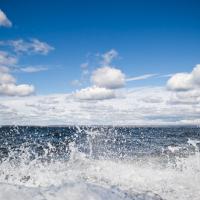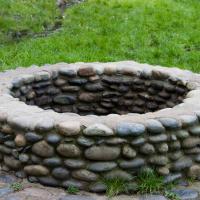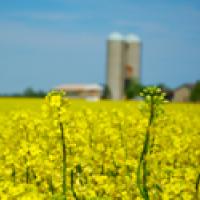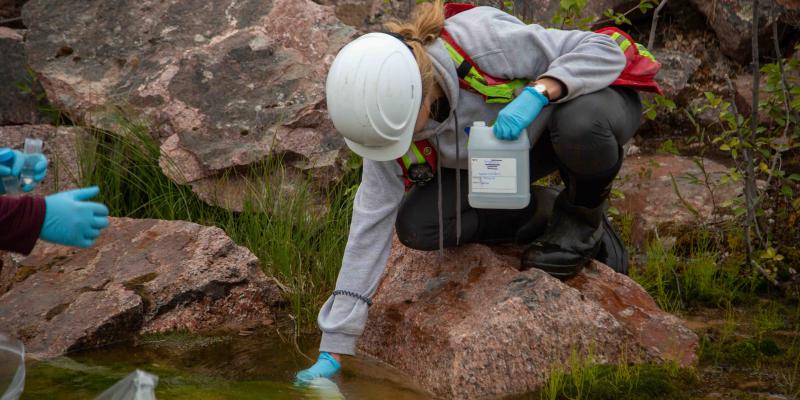SULFATE
Sulfate in water used for livestock should not exceed 1000 mg/L. Higher concentrations of sulfate can be tolerated, but loss in production should be anticipated. High levels of sulfate can cause diarrhea in young animals.
SALINITY (TOTAL DISSOLVED SOLIDS)
The concentration of total dissolved solids (TDS) in water used for livestock watering should not exceed 3000 mg/L. Water with higher TDS concentrations can be used but the type of livestock and their age must be considered. See table below.
Livestock Package, Basic
Includes: Sulfate/Salinity. Suitable for assessing common concerns in water used for livestock.
Livestock Package I
Includes: Calcium, Magnesium, Sodium, Potassium, Chloride, Sulfate, Sum of ions, pH, Specific conductivity, Nitrate, Alkalinity, Bicarbonate, Carbonate, Hydroxide, Total Hardness, Total Dissolved Solids, Fluoride. Suitable for assessing overall quality in water used for livestock.
Livestock Package II
Includes: ICP-MS metal scan, Mercury. Suitable for identifying potential contaminants in water for livestock
Livestock Package III
Includes: Phenoxy Herbicides, Pesticides and Neutral Herbicides. Suitable for identifying contamination of pesticides and herbicides in water used for livestock
| TDS, mg/L | Suitability for Livestock |
|---|---|
| <1000 | Relatively low level of salinity; excellent for all classes of livestock |
| 1000-3000 | Satisfactory for all classes of livestock and poultry, but some loss in productivity should be anticipated; may cause temporary and mild diarrhea in livestock not accustomed to them or water droppings in poultry |
| 3000-5000 | Satisfactory for livestock, but may cause temporary diarrhea or be refused at first by animals not accustomed to them; poor waters for poultry, often causing watery feces, increased mortality and decreased growth, especially in turkeys |
| 7000-10000 | Can be used with reasonable safety for beef cattle, sheep, swine and horses; avoid use for pregnant or lactating animals and dairy cattle; not acceptable for poultry |
| >10000 | Risks with these highly saline waters are so great that they cannot be recommended for use under any conditions |
Surface Water Quality Objectives for Livestock Use (CCME 1999)
(values are in ug/L unless otherwise stated)
| Parameter | Limit (in ug/L unless otherwise noted) |
|---|---|
| Aluminum | 5000 |
| Arsenic | 25 |
| Bacteria | Very young animals are much more susceptible to problems from bacterial contamination than mature animals. For specific advice, consult your veterinarian. |
| Beryllium | 100 |
| Blue-green algae | Avoid heavy growth |
| Boron | 5000 |
| Bromoxynil | 11 |
| Cadmium | 80 |
| Chromium VI | 50 |
| Cobalt | 1000 |
| Copper | 500 ug/L for sheep; 1000 ug/L for cattle; 5000 ug/L for swine and poultry. |
| Dicamba | 122 |
| Diclofop-methyl | 9 |
| Fluoride (in mg/L) | 1 - 2 (1.0 mg/L if feed contains fluoride) |
| Glyphosate | 280 |
| Lead | 100 |
| Lindane | 4 |
| Mercury | 3 |
| Molybdenum | 500 |
| Nickel | 1000 |
| Nitrate + Nitrite (in mg/L) | 100 |
| Phenol | 2 |
| Phenoxy herbicides (2,4-D) | 100 |
| Picloram | 190 |
| Selenium | 50 |
| Sulphate (in mg/L) | 1000 |
| Total Dissolved Solids (in mg/L) | 3000 |
| Triallate | 230 |
| Trifluralin | 45 |
| Uranium | 200 |
| Vanadium | 100 |
| Zinc | 50,000 |
In such situations where the quality of water available for livestock watering does not meet the objectives livestock, producers are advised to contact their local veterinarian for advice.




